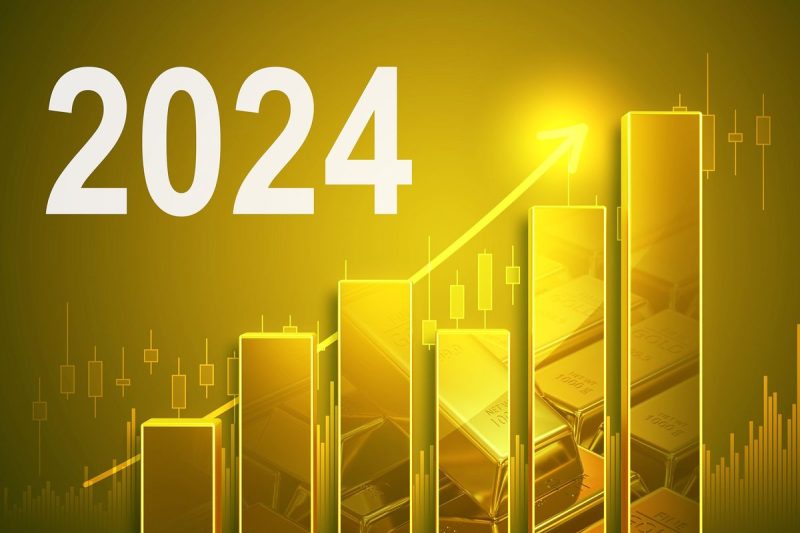As we look towards the year 2024, several key trends are expected to significantly impact the price of gold and the dynamics of the precious metal market. Gold has long been considered a safe-haven asset and a hedge against economic uncertainty, making it a popular choice for investors looking to diversify their portfolios. In this article, we will explore the top trends that are likely to influence the price of gold in the coming year.
1. **Geopolitical Tensions:** Geopolitical tensions have historically been a major driver of gold prices. As political uncertainties and conflicts continue to unfold on the global stage, investors are likely to flock to gold as a safe-haven asset. Factors such as trade disputes, military conflicts, and political instability can all contribute to increased demand for gold, driving prices higher.
2. **Inflation and Interest Rates:** Inflation and interest rates play a significant role in determining the value of gold. As inflation rises, the purchasing power of fiat currencies decreases, leading investors to seek out alternative stores of value such as gold. Additionally, changes in interest rates can affect the opportunity cost of holding gold, as higher interest rates can make other investments more attractive in comparison.
3. **Central Bank Policies:** The policies and actions of central banks around the world can have a direct impact on the price of gold. Central banks are significant holders of gold reserves and their decisions regarding monetary policy, interest rates, and quantitative easing can influence the overall demand for gold in the market.
4. **Technological Developments:** Advancements in technology can also impact the price of gold. The increasing use of gold in various industries, such as electronics and healthcare, can drive up demand for the metal. Additionally, innovations in mining technology and extraction methods can affect the overall supply of gold in the market, influencing prices.
5. **Global Economic Conditions:** The state of the global economy is a crucial factor that affects the price of gold. Economic growth, trade dynamics, and market sentiment all play a role in shaping investor behavior towards gold. During times of economic uncertainty or downturns, gold tends to perform well as investors seek out safe-haven assets to protect their wealth.
6. **Environmental and Social Factors:** Environmental and social factors are becoming increasingly important considerations for investors. The growing focus on sustainability and ethical sourcing practices in the mining industry can impact the reputation of gold producers and influence consumer attitudes towards the metal. Investors are placing greater emphasis on responsible investment practices, which could drive demand for ethically sourced gold in the future.
In conclusion, the price of gold in 2024 will be influenced by a combination of geopolitical tensions, economic conditions, technological developments, central bank policies, and environmental factors. Investors should closely monitor these trends and factors to make informed decisions regarding their gold investments. As a timeless asset with intrinsic value, gold is likely to remain a key component of diversified investment portfolios in the years to come.

